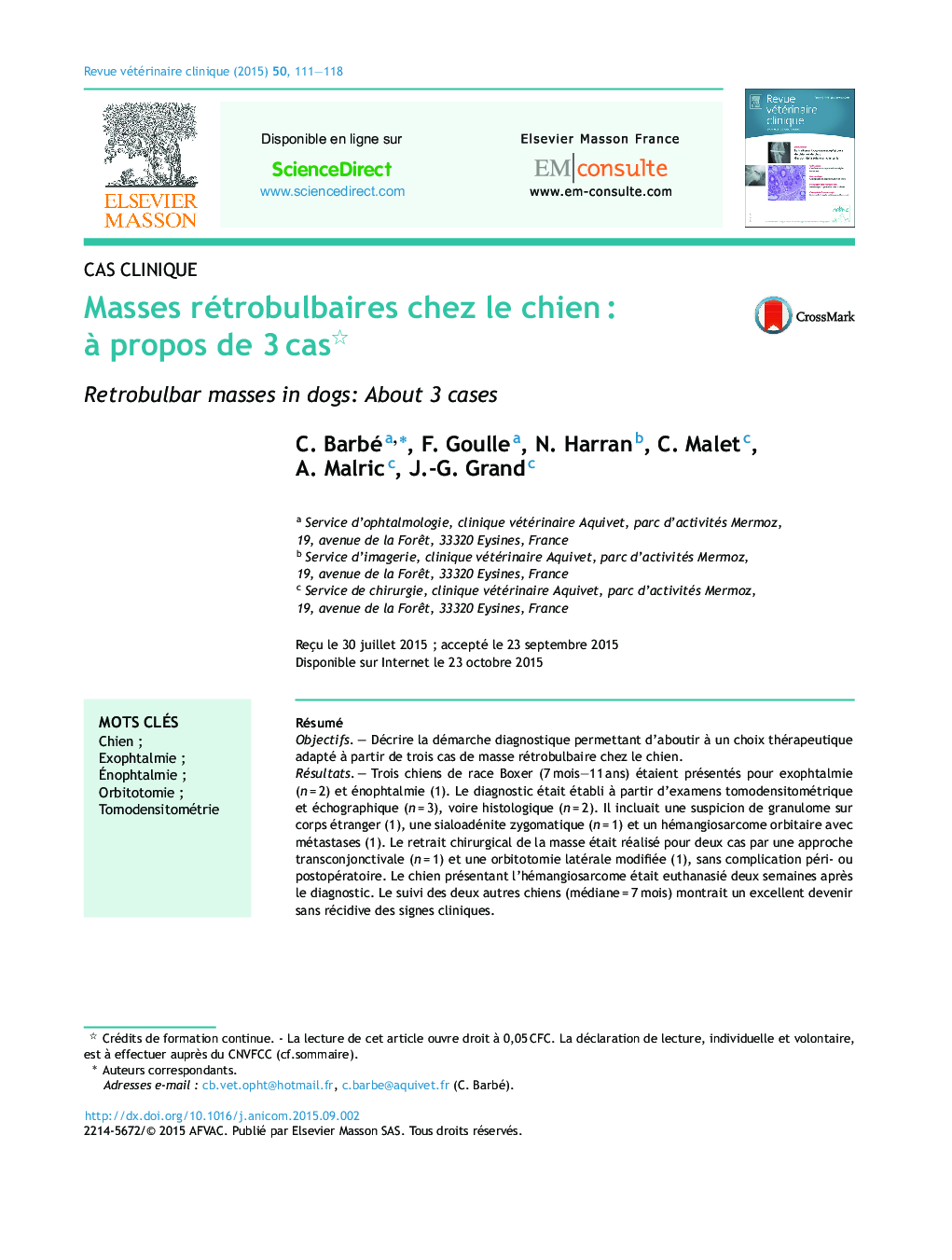| کد مقاله | کد نشریه | سال انتشار | مقاله انگلیسی | نسخه تمام متن |
|---|---|---|---|---|
| 2400934 | 1551648 | 2015 | 8 صفحه PDF | دانلود رایگان |

RésuméObjectifsDécrire la démarche diagnostique permettant d’aboutir à un choix thérapeutique adapté à partir de trois cas de masse rétrobulbaire chez le chien.RésultatsTrois chiens de race Boxer (7 mois–11 ans) étaient présentés pour exophtalmie (n = 2) et énophtalmie (1). Le diagnostic était établi à partir d’examens tomodensitométrique et échographique (n = 3), voire histologique (n = 2). Il incluait une suspicion de granulome sur corps étranger (1), une sialoadénite zygomatique (n = 1) et un hémangiosarcome orbitaire avec métastases (1). Le retrait chirurgical de la masse était réalisé pour deux cas par une approche transconjonctivale (n = 1) et une orbitotomie latérale modifiée (1), sans complication péri- ou postopératoire. Le chien présentant l’hémangiosarcome était euthanasié deux semaines après le diagnostic. Le suivi des deux autres chiens (médiane = 7 mois) montrait un excellent devenir sans récidive des signes cliniques.ConclusionUne démarche diagnostique pertinente doit être conduite pour identifier une affection orbitaire. La caractérisation et la localisation préopératoire d’une masse rétrobulbaire permettent de choisir l’approche thérapeutique la plus appropriée.
SummaryPurposesTo describe the diagnostic approach to achieve a suitable choice of treatment from three cases of retrobulbar mass in dogs.ResultsThree Boxer dogs (7 months–11 years) were presented for exophthalmia (n = 2) or enophthalmia (1). Diagnosis was obtained by tomodensitometric (n = 3), ultrasonographic (n = 3) and histological examinations (n = 2). Diagnosis included suspected foreign body granuloma (1), sialoadenitis of the zygomatic salivary gland (n = 1) and orbital hemangiosarcoma with metastasis (1). Surgical excision of the mass was performed by a transconjunctival approach (n = 1) or a modified lateral orbitotomy (1) with no peri- and postoperative complications reported. The dog with an orbital hemangiosarcoma was euthanized two weeks after initial diagnosis. Long-term follow-up (median = 7 months) for the two other dogs revealed an excellent outcome with no recurrence of the clinical signs.ConclusionA pertinent diagnostic approach must be conducted to identify an orbital disease. Preoperative characterization and localization of a retrobulbar mass allow selecting the most appropriate therapeutic approach.
Journal: Revue Vétérinaire Clinique - Volume 50, Issues 3–4, July–December 2015, Pages 111–118